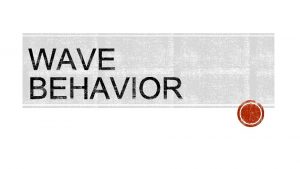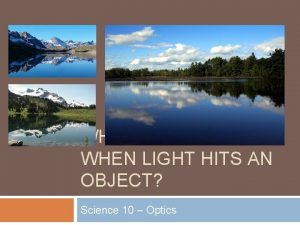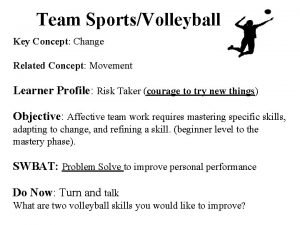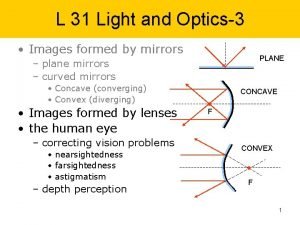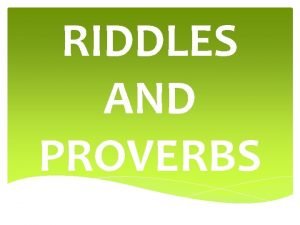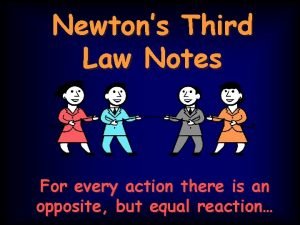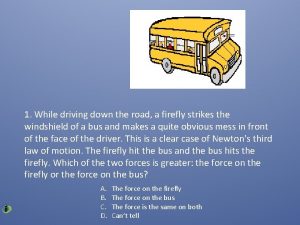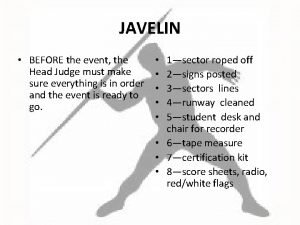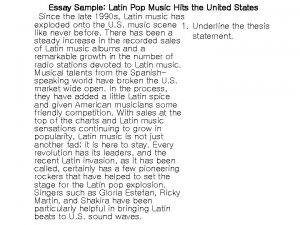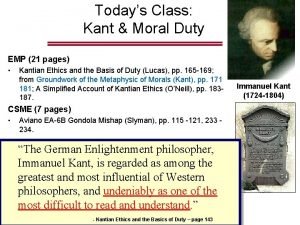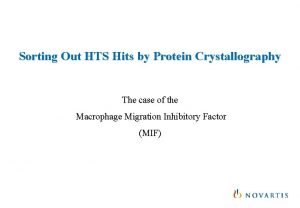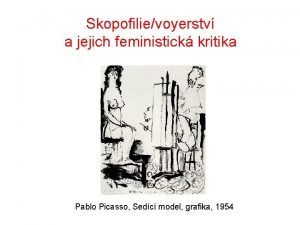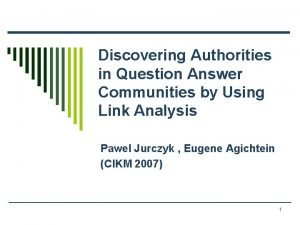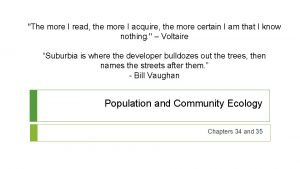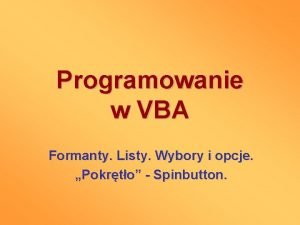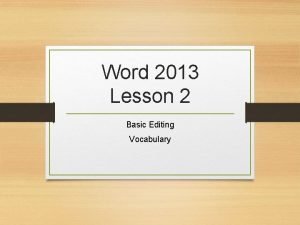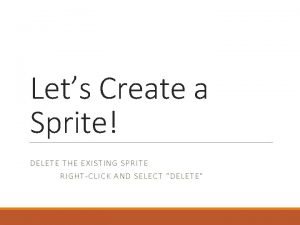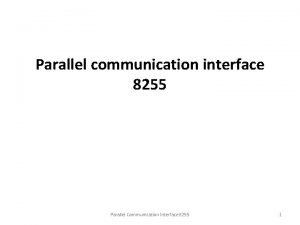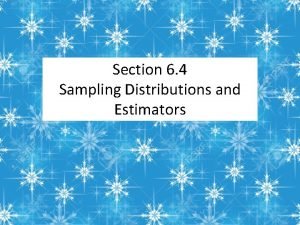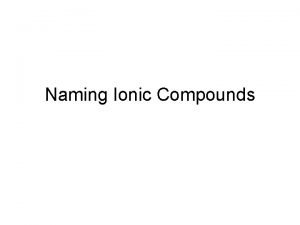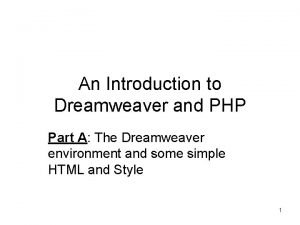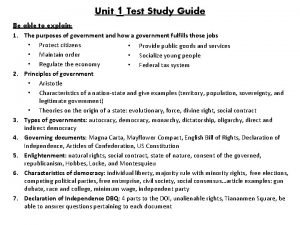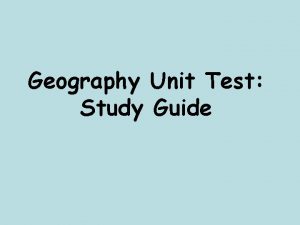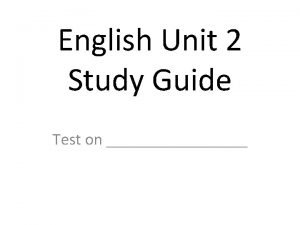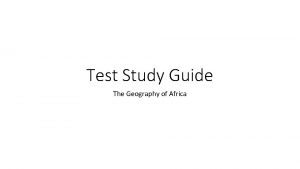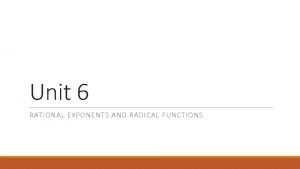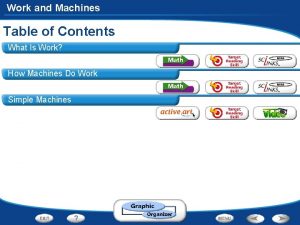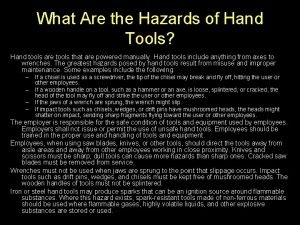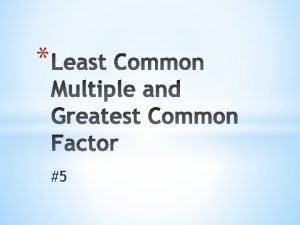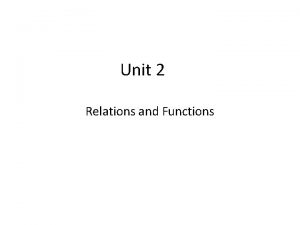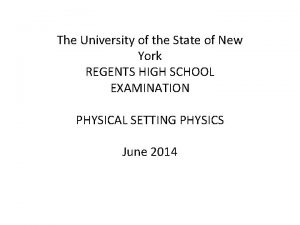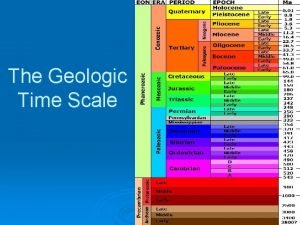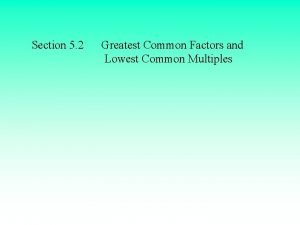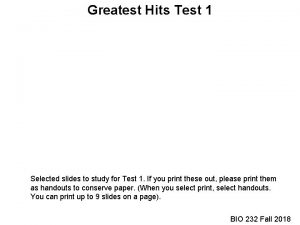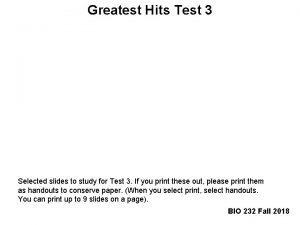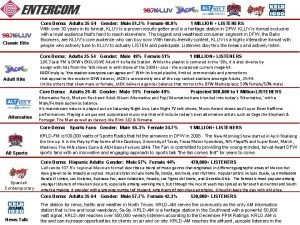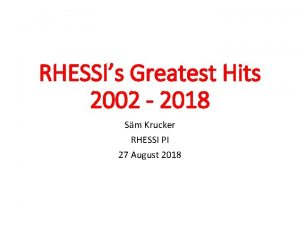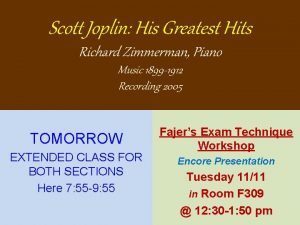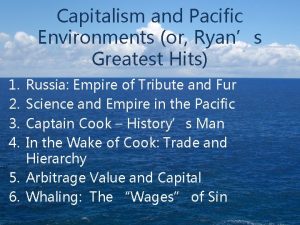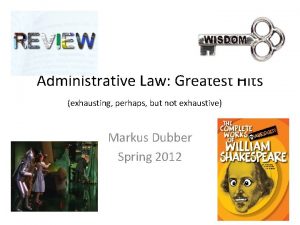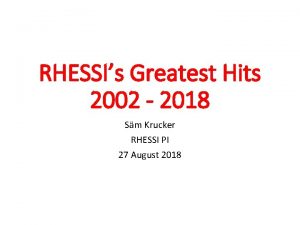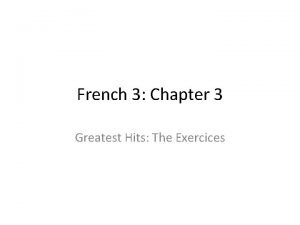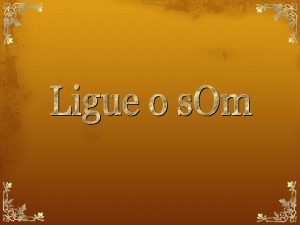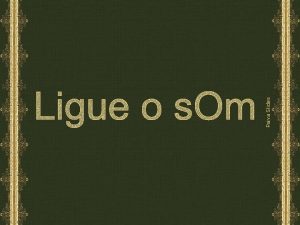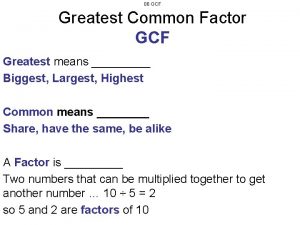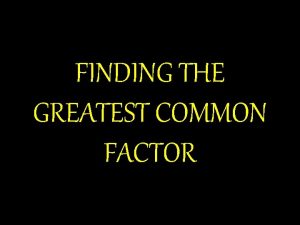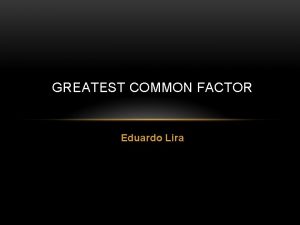Greatest Hits Test 2 Selected slides to study












































































- Slides: 76

Greatest Hits Test 2 Selected slides to study for Test 2. If you print these out, please print them as handouts to conserve paper. (When you select print, select handouts. You can print up to 9 slides on a page). BIO 232 Fall 2017

The Heart as a Pump Stroke Volume Cardiac Output Cardiac Reserve

Stroke Volume End Diastolic Volume (EDV) End Systolic Volume (ESV)

Cardiac Output (CO) CO= HR x SV

Cardiac Reserve COMax - CORest = COReserve

Resting Heart Rate Decreases from Birth 140 -160 ♂ 64 -72 ♀ 72 -80

Tachycardia (100 or more beats/min) Bradycardia (60 or less beats/min) Miguel Indurain A Bradycardia Sufferer

Heart Rate Control Parasympathetic (Vagal Tone) Sympathetic Adrenal

Factors that Alter EDV and ESV Preload Contractility Afterload

Preload: Heart “Stretchiness” Affects EDV Cardiac muscle stretches as heart fills

Frank-Starling Law of the Heart The volume of blood ejected from a ventricle during systole (contraction) depends on the volume present in the ventricle at the end of diastole (relaxation)

Venous Return and Preload Blood returning to heart from veins Slow heart rate Exercise Very fast heart rate Blood Loss

Contractility increases SV Contractile strength at a given muscle length More Ca++ Less Ca++

Afterload Decreases Stroke Volume Pressure in aorta decreases the amount of blood that can leave the left ventricle 120 mm. Hg 80 mm. Hg 100 mm. Hg

Blood Vessel Layers Tunica intima Tunica media Tunica externa

Tunica intima Endothelium Subendothelium

Tunica media Largest layer Smooth Muscle Elastin

Smooth Muscle Non-Straited Involuntary

Tunica media Vasoconstriction Vasodilation Vasomotor nerve fibers

Tunica externa (Adventitia) Collagen fibers Nerve fibers Vasa vasarum

Arterial System Elastic (Conducting) 1 cm-2. 5 cm Muscular (Distributing) 0. 3 mm-1 cm Arterioles 10 um- 0. 3 mm Diameters for lumens

Elastic (Conducting) Arteries Fire Hose Very elastic Conduct blood with little resistance

Compliance/Distensibility Pressure waves Be able to describe the concept and why it is important. (Posted video may be helpful) Decreases pressure in smaller vessels

Muscular (Distributing) Arteries Carry blood to organs Smallest named arteries Less elastin, more smooth muscle

Arterioles Largest 3 layers Smallest 2 layers Change diameter

Capillaries Smallest vessel Tunica intima

Continuous Capillaries Endothelial cells Tight junctions

Fenestrated Capillaries Pores More material in and out of blood SI Kidney Endocrine glands

Sinusoidal Capillaries Very large fenestrated pores Big intercellular clefts Liver Bone marrow

Capillary Beds: Closed Terminal Arterioles Metarterioles + Thoroughfare channel Vascular Shunt Postcapillary venule

Capillary Beds: Open Precapillary sphincters OPEN/CLOSE due to LOCAL FACTORS True capillaries 13

Venous System Venules Veins Superior Vena Cava Inferior Vena Cava

Systemic Venous System Large Lumen Thin walls Less smooth muscle Less elastin Holds ~65% of blood

Venous Valves

Venous Blood Pressure No pulse Very low pressure Blood is pushed back up to the heart

The Muscular Pump Muscle contraction drives blood to heart

The Respiratory Pump

Flow Requires Pressure Differences Blood Flow Difference in Pressure

Pressure is measured in mm. Hg Pressure= Force Area mm. Hg

Pressures across the Vascular System Systolic Diastolic Pulse Pressure

Resistance Opposes Blood Flow Friction of blood moving through vessels Flow = ∆P R R is Peripheral Resistance (Systemic Circulation) (Will be printed on test)

One Equation to Rule them All (HR) (EDV-ESV) (R) = Δ P Difference in pressure between heart and capillary (Will be printed on test)

Resistance: Vessel Diameter Laminar Flow Fourth power rule

Resistance: Vessel Diameter Resistance low in conducting vessels Resistance in small arteries changes quickly

Resistance: Turbulence Rapid changes in vessel size Protrusions

Resistance: Viscosity Thickness of blood Polycythemia Anemia

Vasomotor Tone Vasomotor Fibers Arterioles +NE or –NE leads to vasoconstriction or vasodilation (effects vary by location)

Short Term Hormonal Controls Norepinephrine and Epinephrine Atrial Natriuretic Peptide Angiotensin II

Norepinephrine and Epinephrine Vasodilation skeletal and cardiac muscle Vasoconstriction other organs CO

Atrial Natriuretic Peptide Myocardial cells of atria Vasodilation Decreases blood volume

Angiotensin II Secreted by kidney if blood volume is low Vasoconstriction Increases Blood Volume

Long Term Control of Blood Pressure Blood Volume changes CO! More blood, more pressure Less blood, less pressure Renal

Direct Renal Mechanisms Less blood More H 2 O returned to blood More blood Less H 2 O returned to blood

A Very Brief Overview of Kidney Function Sodium follows water

Renin/ Angiotensin II Renin Angiotensin I Angiotensin Converting Enzyme Angiotensin II

Angiotensin II Aldosterone increase Na reuptake

Atrial Natriuretic Peptide High Blood Pressure Blocks Aldosterone More Na and water leave as urine

Circulatory Shock Low blood pressure caused by unfilled vessels or abnormal circulation Hypovolemic Shock

Circulatory Shock Vascular Shock Anaphylactic Shock Septic Shock

Hypotension Low Blood Pressure Orthostatic Hypotension Chronic Hypotension

Hypertension High Blood Pressure (140/90) Transientexercise, fever, anger ~30% of 50+ year olds “The Silent Killer”

Lung Anatomy Apex Base

Pleurae surround Each Lung Parietal pleura Pleural cavity Visceral pleura

Pulmonary Ventilation Inspiration Expiration

Respiration Depends on Pressure and Flow Change in volume Change in pressure in lungs Change in air flow

Quiet Inspiration Changes Lung Volume Diaphragm External intercostals How does this lead to air flow into the lungs?

Muscle of Quiet Expiration Diaphragm External intercostals How does this lead to air flow out of the lungs?

Muscles of Forced Inspiration Diaphragm External intercostals Sternocleidomastoid Scalenes Pec Minor How does this lead to increased air flow into the lungs?

Muscles of Forced Expiration Diaphragm External intercostals Internal intercostals Abdominal muscles How does this lead to increased air flow out of the lungs?

Know Tidal Volume, Inspiratory and Expiratory Reserve Volumes and Residual Volume

Capacities (Adding Volumes) Vital Capacity Total Lung Capacity

FVC and FEV Forced Vital Capacity Forced Expiratory Volume FEV 1 ~80%

FVC and FEV Obstructive Disorders Restrictive Disorders

Restrictive Disorders Reduction in lung capacities VLC, TLC, etc. Decrease in compliance “stretchiness” What would FVC and FEV look like?

Structural Changes and Compliance Fibrosis Costal ossification Weakness of inspirational muscles

Obstructive Disorders Lung volume unchanged but air flow is restricted What would FVC and FEV look like? Minute ventilation
 A small child slides down the four frictionless slides
A small child slides down the four frictionless slides Final energy quick check
Final energy quick check Selected response test
Selected response test A wave hits an object as shown.
A wave hits an object as shown. What happens when light hits a transparent object
What happens when light hits a transparent object Italian pop hits
Italian pop hits Hand signal in volleyball
Hand signal in volleyball Storm on the island seamus heaney
Storm on the island seamus heaney Unjumble i am a weakish speller
Unjumble i am a weakish speller Why does light not bend when it hits a curved surface
Why does light not bend when it hits a curved surface Hype people earth duh hey
Hype people earth duh hey Similarities of riddles and proverbs
Similarities of riddles and proverbs Windshield hits bug reaction
Windshield hits bug reaction Hits vs pagerank
Hits vs pagerank Types of hits
Types of hits Hits record number new
Hits record number new While driving down the road a firefly
While driving down the road a firefly Javelin score sheet
Javelin score sheet Pop music essay
Pop music essay Military jet hits cable car
Military jet hits cable car Hccee
Hccee Skopofilie
Skopofilie Nina simone biggest hits
Nina simone biggest hits Find answers to questions
Find answers to questions Quick hits app
Quick hits app Findings of qualitative research
Findings of qualitative research K selected species survivorship curve
K selected species survivorship curve Words images objects qualitative or quantitative
Words images objects qualitative or quantitative Vba combobox selected item
Vba combobox selected item K selected species survivorship curve
K selected species survivorship curve Example of r selected species
Example of r selected species Allergy therapy makes bees go away
Allergy therapy makes bees go away Removes selected text and places it on the clipboard
Removes selected text and places it on the clipboard Understanding population pyramids
Understanding population pyramids Subject verb agreement exercise
Subject verb agreement exercise Tool to delete selected sprite
Tool to delete selected sprite Selected response tasks
Selected response tasks Control word format of 8255
Control word format of 8255 Congratulations you have been selected
Congratulations you have been selected Three randomly selected households are surveyed 2 6 7
Three randomly selected households are surveyed 2 6 7 K selected
K selected R-selected species
R-selected species Ionic compounds
Ionic compounds Whats conditional relative frequency
Whats conditional relative frequency Gwen nuttall
Gwen nuttall Web authoring using adobe dreamweaver - selected response
Web authoring using adobe dreamweaver - selected response Slides fatigue test
Slides fatigue test What is case series
What is case series Retrospective cohort study vs prospective cohort study
Retrospective cohort study vs prospective cohort study Work study technique
Work study technique Study less study smart
Study less study smart Phytogeographical regions of india map
Phytogeographical regions of india map Work study objectives
Work study objectives Distinguish between time study and motion study
Distinguish between time study and motion study Unit 1 test 2
Unit 1 test 2 Temperate region
Temperate region Unit 2 test study guide
Unit 2 test study guide Africa geography unit test study guide
Africa geography unit test study guide Unit 6 test study guide radical functions answer key
Unit 6 test study guide radical functions answer key What is a complex machine example
What is a complex machine example William shakespeare is often called the world’s greatest
William shakespeare is often called the world’s greatest Which of the following integers has the greatest value? *
Which of the following integers has the greatest value? * Gcf of 34
Gcf of 34 Hazard of hand tools
Hazard of hand tools Gcf 15 and 20
Gcf 15 and 20 Greatest lower bound and least upper bound
Greatest lower bound and least upper bound Because of easter
Because of easter Creation of adam
Creation of adam Which combination of initial horizontal velocity
Which combination of initial horizontal velocity Steady precipitation preceding a front is an indication of
Steady precipitation preceding a front is an indication of Factors of 50
Factors of 50 The greatest want of the world
The greatest want of the world Mr. bolanos
Mr. bolanos Cover the greatest expanses and are subdivided into eras.
Cover the greatest expanses and are subdivided into eras. English empire at its height
English empire at its height Stonehenge is britain's greatest national icon
Stonehenge is britain's greatest national icon Greatest common multiple definition
Greatest common multiple definition



